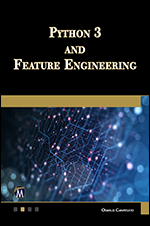Data Structures & Algorithms in Python: Implementing Data Structures
Python
| Beginner
- 13 videos | 1h 29m 36s
- Includes Assessment
- Earns a Badge
Examine operations that have different values of time complexity and delve into implementation of basic data structures, such as linked lists, stacks, and queues in Python, in this 13-video course. Key concepts covered here include operations that run in constant time regardless of input; code whose time complexity varies directly with value of input; and tasks whose time complexity varies linearly with size of input. Next, you will learn about operations whose time complexity varies as the square of input size; how to use native queue class of Python and perform standard queue operations; and how to code a queue class for many standard queue operations, such as enqueue and dequeue. Then, learn how a Python list can be used as a stack by loading and unloading elements, and how to implement a custom stack class for common stack operations. Finally, study code functions to perform search and delete operations in linked lists and reverse the ordering of its nodes; and create a linked list and test out various operations that have been defined.
WHAT YOU WILL LEARN
-
Discover the key concepts covered in this courseIdentify operations that run in constant time regardless of inputRecognize code whose time complexity varies directly with the value of the inputIdentify tasks whose time complexity varies linearly with the size of the inputRecognize operations whose time complexity varies as the square of the input sizeUse the native queue class of python and perform the standard queue operations on itCode a bespoke queue class that includes definitions for many of the standard queue operations, such as enqueue and dequeue
-
Recognize how a python list can be used as a stack by loading and unloading elements from the same endImplement a custom stack class that includes functions for the common stack operationsDefine a linked list class and implement functions to insert a node at the head or the tail of the linked listCode functions to perform search and delete operations in a linked list and to reverse the ordering of its nodesInstantiate a linked list and test out the various operations that have been definedSummarize common operations on stacks and their time complexities, and list the situations when adding to or removing elements from a stack or queue can throw exceptions
IN THIS COURSE
-
2m 11s
-
9m 26sFind out how to identify operations that run in constant time regardless of the size of the input. FREE ACCESS
-
3. O(n) Operations - Part 17m 50sUpon completion of this video, you will be able to recognize code whose time complexity varies directly with the size of the input. FREE ACCESS
-
4. O(n) Operations - Part 27m 41sIn this video, learn how to identify tasks whose time complexity varies linearly with the size of the input. FREE ACCESS
-
5. O(n*n) Operations8m 36sAfter completing this video, you will be able to recognize operations whose time complexity varies as the square of the input size. FREE ACCESS
-
6. Python's Built-in Queue6m 31sDuring this video, you will learn how to use the native Queue class of Python and perform the standard queue operations on it. FREE ACCESS
-
7. Defining a Custom Queue7m 9sFind out how to code a bespoke Queue class that includes definitions for many of the standard queue operations, such as enqueue() and dequeue(). FREE ACCESS
-
8. Use a Python List as a Stack3m 59sUpon completion of this video, you will be able to recognize how a Python list can be used as a stack by loading and unloading elements from the same end. FREE ACCESS
-
9. Defining a Custom Stack6m 9sLearn how to implement a custom Stack class that includes functions for the common stack operations: push, pop, peek, and isEmpty. FREE ACCESS
-
10. Linked Lists: Defining Insert Operations8mLearn how to define a Linked List class and implement functions to insert a node at the head or the tail of the linked list. FREE ACCESS
-
11. Linked Lists: Search, Delete, and Reverse Operations9m 2sFind out how to code functions to perform search and delete operations in a linked list and to reverse the ordering of its nodes. FREE ACCESS
-
12. Linked Lists: Testing the Functions8m 37sFind out how to create a Linked List and test out the various operations that have been defined. FREE ACCESS
-
13. Exercise: Implementing Data Structures in Python4m 26sIn this video, you will learn how to summarize common operations on stacks and their time complexities, and list the situations when adding to or removing elements from a stack or queue can cause exceptions. FREE ACCESS
EARN A DIGITAL BADGE WHEN YOU COMPLETE THIS COURSE
Skillsoft is providing you the opportunity to earn a digital badge upon successful completion on some of our courses, which can be shared on any social network or business platform.
Digital badges are yours to keep, forever.






